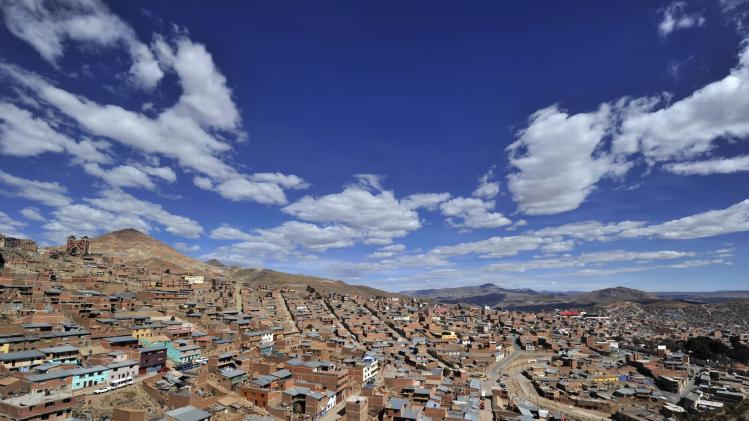
UNESCO's
World Heritage Committee recently added the colonial city of Potosi to
the List of World Heritage in Danger, on June 24, 2014 Construction workers in Bolivia have stumbled upon a mass grave with the
remains of hundreds of likely indigenous miners during the Spanish
colonial era, a researcher said Saturday.
The workers
found the remains this week as they started construction on a new
building in the "El Minero" district of Potosi, located high up in the
Andes.
"We are talking about a
common grave found at about 1.8 meters (5.9 feet), and the human
remains are scattered over an area of four by four meters," said Sergio
Fidel, a researcher at a museum belonging to Tomas Frias University.
In
the Spanish colonial era, Potosi became famous for its massive silver
and tin reserves, which started to be mined in the 16th century.
Local
indigenous people, mainly ethnic Aymara, were commonly put to work as
both slaves and indentured servants, especially at the famed Cerro Rico
(Rich Hill) mountain.
The
construction workers, who have had no specialized excavation training,
say they found the remains of 400 to 500 people and that there may be
many more.
The university got
involved when its staff learned the workers were piling the bones in a
massive heap, fully exposed as construction continued.
One
hypothesis is that they happened on an indigenous burial ground of
slaves and indentured servants who would have worked at the mine in
precarious conditions, said Jose Antonio Fuertes, a historian at the
national mint.
Another
possibility is the remains could be linked to the collapse of a
reservoir in Potosi during the 1600s, which killed some 2,000 people.
The Andean city, once among the world's biggest cities, now has a population of 200,000.
Last
month, UNESCO placed the city and the increasingly unstable Cerro Rico
on its World Heritage in Danger list due to "uncontrolled mining
operations."

No comments:
Post a Comment